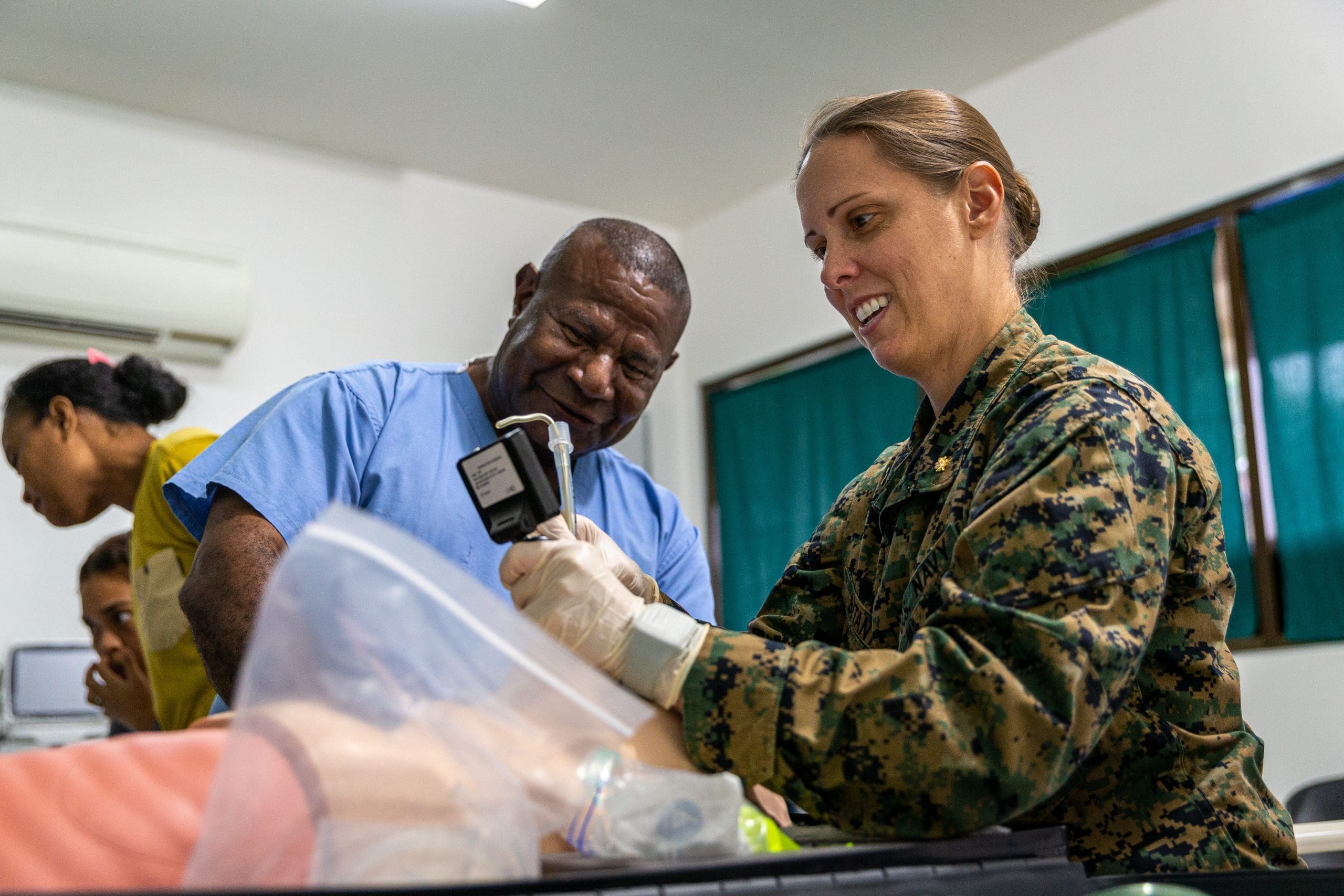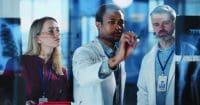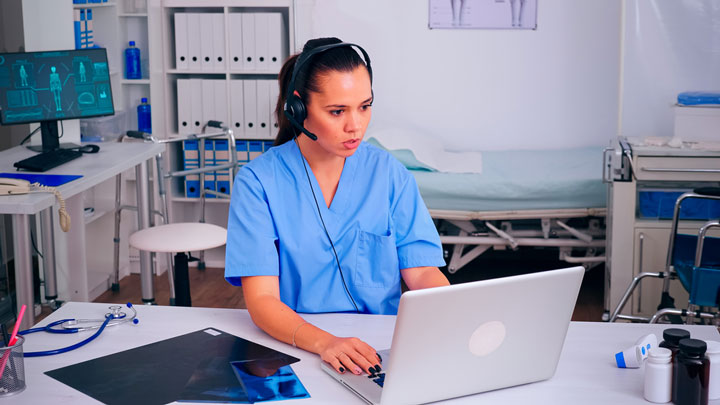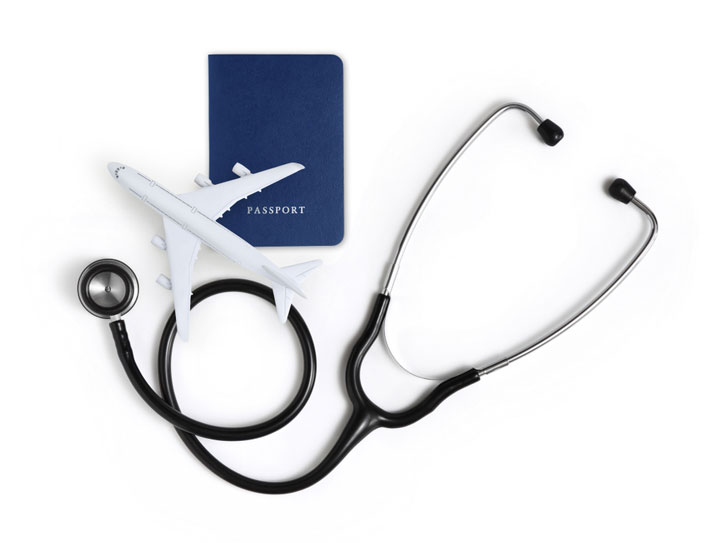USN nurses share their deployment experiences.
- Prospects for serving as a U.S. Navy nurse that involve sea duty include aircraft carriers, amphibious assault ships via fleet surgical teams, hospital ships, expeditionary units.
- Military nursing is a team sport that provides a rewarding opportunity for nurses interested in serving.
Have you ever thought about a career as a U.S. Navy (USN) nurse? If so, you must consider that USN nurses hold two jobs—Naval officer and RN—and most are assigned to an operational platform for either their primary job responsibility or as a collateral role. USN nurses deploy with both Sailors and Marines. Let’s discuss four prospects for USN nurses that involve sea duty: aircraft carriers, amphibious assault ships via fleet surgical teams (FSTs), hospital ships, and expeditionary units. (This article is part of a larger study published elsewhere.)
Aircraft carriers
Currently, the USN has 11 aircraft carriers, with one typically in a shipyard for routine maintenance. When fully manned, operational carriers have over 5,000 personnel, one operating room (OR), three intensive care unit (ICU) beds, and over 50 ward beds. The medical department usually consists of five physicians, five dentists, one ship’s nurse with critical care or emergency experience, one anesthesia provider (either a nurse anesthetist or an anesthesiologist), five medical service officers/allied health professionals, and more than 45 hospital corpsmen.
Most ship nurse tours last 2 years. As part of a larger study, we asked USN nurses about their experiences on aircraft carriers when deployed from 2019 to 2021 during the COVID-19 pandemic.
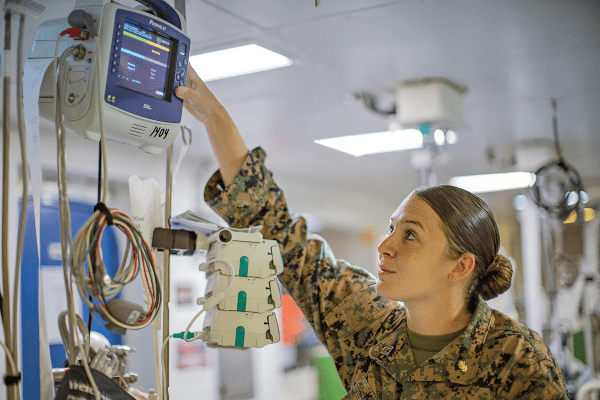

The following study participant served as the only nurse on an aircraft carrier and spoke about maintaining a training environment common to all aircraft carriers:
As the medical training team lead, you’re responsible for getting a team together, not just of corpsmen, but of other non-medical personnel on the ship to assist with training all of the crew … [on] 11 battle wounds [abdominal eviscerations, burns, electrical shock, fractures, heat stress, hypothermia, lacerations, massive hemorrhage with amputations, puncture wounds, smoke inhalation, and sucking chest wounds]. [T]hat takes some time because you’re training non-medical personnel … to train other people. … So [I spent] time doing that [and] writing drill packages.
We normally do the general quarters drill [battle stations] every week. There’s integration with all that … with the fire marshal, because we need to coordinate our casualties and we need to work with [the] weapons [department] to run the elevators [to transport patients from the scene of injury to the medical department or to transport patients from the medical department to the flight deck so they can be flown off the ship for further care]. So it’s a lot of work.
When asked about a typical day on an aircraft carrier, this participant—who augmented the carrier’s lone nurse during the pandemic in case of COVID-19 spread on the ship—shared the following:
A typical day on the ship would vary depending on the evolution of the day, but usually, morning muster [is] around 07:00, then check emails or make a phone call, depending on the time zone. Followed by sick call at 08:30, which only requires the nurse to administer I.V. meds if needed. If there were patients in the ward overnight, verify their chart, [confirm] that orders were done, [ensure] medication [was] administered, [check] lab values, round with the [physician], and be available to support the corpsman on any clinical or educational needs. If there were medical drills or mass casualty drills, participate and help with the training. If none of [those] things were happening, I would be exercising, reading, watching movies, and going outside on the side of the boat or hanger bay to see the sun and the water.
Because I was an augmented RN I would help as much as I could with the day-to day activities of the ship’s nurse. If not much was going on [then] there was a lot of downtime. For the first time in my life, I was able to work out almost every day, mostly to pass [the] time and to keep the sanity of living a Ground Hog’s Day.
Another augmentee participant shared their experience of a typical day:
The typical workday for the ship’s nurse would conclude around 15:00–15:30 followed by another meeting with the medical officers on the ship to discuss any updates/plans/etc. The time following was free time to do whatever we needed or relax. If we had a patient that required overnight care, I would stay in [the] medical [department] to oversee their care. It was definitely beneficial/a sense of relief for the ship’s nurse to have another RN on board that would stay up with any overnight stays. Lights out on the ship was 22:00 every night.
Fleet surgical teams
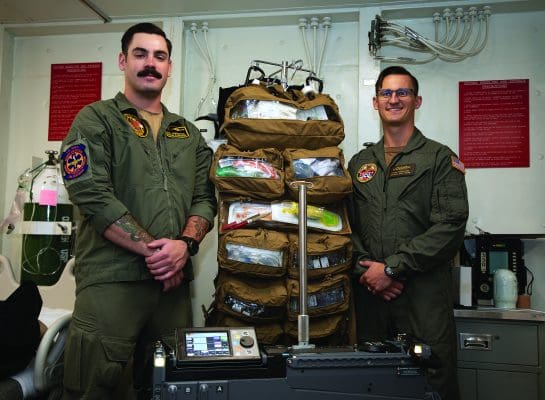

FSTs augment amphibious assault ships, which can receive casualties (from helicopters) and provide treatment. They have up to six ORs, 14 ICU beds, and 45 ward beds.
When not aboard a ship, FST members usually work in regional military treatment facilities (MTFs) to maintain their skills. Most FSTs include 15 members: medical regulating/coordinating officer, senior enlisted leader, general surgeon, family practice physician, anesthesia provider, critical care nurse, OR nurse, two surgical technicians, two laboratory technicians, one respiratory technician, two general duty corpsmen, and one radiology technician.
The USN has nine FSTs positioned on the West and East Coasts, as well as in Japan. Customarily, FSTs deploy as an entire unit, but sometimes specific personnel deploy for a mission that requires only a partial team. Because current peacetime staffing of the medical departments on amphibious assault ships—even with FSTs onboard—can’t fulfill a wartime medical mission, additional medical augmentation personnel are obtained from MTFs worldwide.
We asked USN nurses about their experience with FSTs when deployed from 2019 to 2021. One participant emphasized the need for flexibility:
As far as your mission, I think it’s interesting because most of the [time] the FSTs go to amphibious ships. We don’t bring anything with us [other than] blood and corporate knowledge [education, training, familiarity with the operational environment, and applicable certifications]; you have to deal with what’s on the ship. So whatever their material maintenance is, [whether] it’s a new ship [or] an old ship, you have to make it work. [D]ifferent platforms may bring AMALs [Authorized Medical Allowance Lists], [but] we don’t bring anything. So that’s kind of unique that you … work with what you’ve got, and the mission’s cool. The mission’s very flexible. You’re there to support the ship, the Marines, Sailors, Soldiers, anybody, but it’s also challenging because you have to be very, very flexible and very like, “All right. This is what we’re going to do today.” And once you get on the ship, you’re an asset that they don’t normally have, so you might get pulled in a bunch of different areas. It’s hard to really define the job.
Another participant indicated that being on an FST made them a more resilient nurse:
The opportunity to go on FST or serve on a ship is very unique. Everyday something new pops up that you wouldn’t know or wouldn’t even think of and it’s awesome. When you do go back to a normal facility or to any other operational billet, there’s always something that you can tap into like, “Oh, well, you know what? [I’ve] overcome worse challenges than this.”
The following FST nurse described performing surgery on a moving ship. A patient severed a finger, which required immediate reattachment surgery. However, the high seas didn’t cooperate:
We literally asked the Captain of the boat if there’s any way that we could go into some sort of calmer waters. Actually trying [to] … stabilize the surgeon as she was trying to reattach [the finger], because she was wobbly on the stool. … So we had two corpsmen trying to hold the chair so that [the surgeon] didn’t move too much. And their response was: “We did; this is the calmer sea state.”
Hospital ships
Historically, hospital ships have been dispatched to provide either humanitarian aid or to respond to disasters. In 2020, perhaps for the first time, they were deployed stateside in support of the nation’s pandemic response efforts.
The USN has two hospital ships: the USNS Mercy in San Diego, CA, and the USNS Comfort in Norfolk, VA. Each contains several ORs, can expand to 1,000 beds, and offers radiological, laboratory, pharmacy, and optometry services. Large military helicopters can land on both ships. The crew composition varies by mission type, but when fully operational, a hospital ship can have a crew of over 70 civilians and up to 1,200 healthcare and communications personnel (civilian and military).
We asked USN nurses about their experiences on hospital ships when deployed at the beginning of the COVID-19 pandemic. We quickly learned that no typical day existed on the USNS Comfort as nurses worked tirelessly in New York City to provide the best possible care during an impossible time. The following participant spoke about working many days in a row as well as how the USN modified the ship to care for patients with an acute respiratory infectious disease:
Once all the COVID patients came, they wanted [to] separate the ship’s crew from the hospital people. [They] built walls on some of the stairwells so we couldn’t go on parts of the ship. They had us move to a hotel, and we would get bused to and from [the ship]. We weren’t allowed to go outside, unfortunately. … It was pretty much going straight from [the] hotel, sleep as much as you can, wake up, go in, work your butt off all day, and then bus back. We got some replacements. … I think it was like 14 or 15 days of the crazy days until we got a day off, which was nice. But even [on] a day off, we were stuck in our hotel room the whole time. … The shifts were completely exhausting. [It’s] not like you get to sit down and chart on the computer … you’re charting on paper, standing up. I don’t think I sat down almost the whole time during [each] shift.
This next participant served on both hospital ships at the beginning of the pandemic, starting first on the West Coast with the USNS Mercy. They preferred the work environment and the mission of the USNS Comfort when caring for patients in New York City with COVID-19:
I like showing up to work, being tasked to do a job, doing it, carrying out the plan of the day, and knowing what you’re supposed to do. So I definitely appreciated that change of pace going to the East Coast.
Expeditionary units
Assignment to an expeditionary unit can involve a variety of options, including Marine expeditionary units (MEUs), Expeditionary Resuscitative Surgical Service (ERSS) teams, and shock trauma platoons (also with the Marines). Expeditionary units provide rapid response to combat missions and disasters. We asked USN nurses about their experiences when assigned to an expeditionary unit, including being on an ERSS team, as this participant shared:
[W]e were a surgical team. That included myself, [I’m] a critical care nurse, an ER [emergency room] doctor, a physician’s assistant, a surgeon, a surgical tech, and respiratory therapist. We had our own surgical suite within the hangar bay. … It was a crew of about 150 people, but what was interesting about the ship [was that] it’s an expeditionary sea base, so it can augment up to 300 people. There was extra berthing outside on ConEx [Container Express] boxes … [which] had bathrooms [and] laundry. This [was] separate from the ship, [because Special Forces sometimes didn’t have time to quarantine prior to a rapid deployment. If they were brought on a ship for a mission, they couldn’t mix with the ship’s crew for fear of bringing COVID-19 with them and infecting the crew].
Although the USN has many operational tools at its disposal, this same expeditionary nurse noted that prevention plays a key role in maintaining a fit and ready force: “Our biggest tool at sea is to prevent illness. Otherwise, if people get sick, we can’t do our mission and our job.”
Pride in teamwork
Military nursing is a team sport. It provides many rewards for nurses interested in serving. The following two study participants describe that teamwork and the pride they experience in serving:
We had a good team. I think that’s a good thing about Navy nursing. … [If] I worked the civilian side … it’s a little bit like …, “This is my patient,” and [you] stay to yourself a little bit. [With] Navy nursing, I’ve never felt that way. We’re very much a team and everyone wants to help each other out. We were all in [it] together. [W]e all bonded together. I think that was what pulled us through, … we were all in it together.
We didn’t have any outbreaks in over a year in the middle of a pandemic. We did amazing. A lot of sacrifices to make that happen. We did really well to be able to stay deployable, actually launch jets, and be productive out in the middle of the ocean. So it was a rewarding, crazy deployment.
RESEARCH DISCLAIMER: The views expressed in this article reflect the results of research conducted by the authors and do not necessarily reflect the official policy or position of the Department of the Navy, Department of Defense, the U.S. government, or the TriService Nursing Research Program (TSNRP).
RESEARCH IRB APPROVAL STATEMENT: The study protocol was approved by the George Washington University Institutional Review Board and the Uniformed Services University of the Health Sciences Human Research Protections Official in compliance with all applicable Federal regulations governing the protection of human subjects.
FUNDING ACKNOWLEDGEMENT: This study was supported by funding from TSNRP under award number 11052-N21-12.
COPYRIGHT STATEMENT: CDR Grover and CDR Mojica are military service members. This work was prepared as part of their official duties. Title 17 U.S.C. 105 provides that “Copyright protection under this title is not available for any work of the U.S. government.” Title 17 U.S.C. 101 defines a U.S. government work as a work prepared by a military service member or employee of the U.S. government as part of that person’s official duties.
INSTITUTIONAL CLEARANCE: Institutional Clearance by a public affairs officer for this publication was provided by Naval Medical Center Portsmouth, Portsmouth, VA.
Reprinted with permission.
Catherine Wilson Cox is a tenured associate professor at George Washington University School of Nursing in Ashburn, Virginia, and Washington, DC. Shawna G. Grover is an assistant department head at the Naval Medical Center Portsmouth in Portsmouth, Virginia. Susan L. Mojica is a director at the Navy and Marine Corps Public Health Center in Portsmouth, Virginia.
American Nurse Journal. 2024; 19(6). Doi: 10.51256/ANJ0624110
References
Kotwal RS, Staudt AM, Trevino JD, et al. A review of casualties transported to Role 2 medical treatment facilities in Afghanistan. Mil Med. 2018;183(suppl_1):134-45. doi:10.1093/milmed/usx211
Kuehner C. The Navy Nurse Corps: Needed now more than ever. Proceedings. 2022;148(2). usni.org/magazines/proceedings/2022/february/navy-nurse-corps-needed-now-more-ever
Perry WL, Atler A, Euller R, Martinez AR, Nichols T, Welch J. Allocating marine expeditionary unit equipment to minimize shortfalls. RAND Corporation. May 21, 2015. rand.org/pubs/tools/TL167.html
Seck HH. Active ships in the US Navy. Military.com. June 23, 2021. military.com/navy/us-navy-ships.html
Sobocinski AB. Navy hospital ships have history of answering nation’s call. U.S. Department of Defense. March 27, 2020.
defense.gov/News/Feature-Stories/story/Article/2128626/navy-hospital-ships-have-history-of-answering-nations-call/ Surface Warfare Medicine Institute.
Fleet medicine pocket reference 2015. flagsignalsorg.files.wordpress.com/2016/09/fleet-medcal-pocket-reference-2015.pdf
U.S. Marines. Marine air-ground task force. marines.com/about-the-marine-corps/marine-corps-structure/air-ground-task-force.html
U.S. Marines. What is a MEU. www.22ndmeu.marines.mil/About/What-is-a-MEU
U.S. Navy. Aircraft carriers – CVN. September 12, 2021. www.navy.mil/Resources/Fact-Files/Display-FactFiles/Article/2169795/aircraft-carriers-cvn
U.S. Navy. Fleet surgical teams (FST). www.c2f.usff.navy.mil/fst
U.S. Navy. Navy Medicine conducts ERSS proficiency training. September 12, 2022. www.navy.mil/Press-Office/News-Stories/Article/3154773/navy-medicine-conducts-erss-proficiency-training
U.S. Navy. Shipboard training. January 16, 2020. elearning.sabresystems.com/cvn/traman/chapter4.pdf
U.S. Navy. U.S. Navy deploys newest medical expeditionary capability aboard Eisenhower Carrier Strike Group. October 16, 2023. www.med.navy.mil/Media/News/Article/3558156/us-navy-deploys-newest-medical-expeditionary-capability-aboard-eisenhower-carri
Key words: Navy nursing, military nursing, career options

